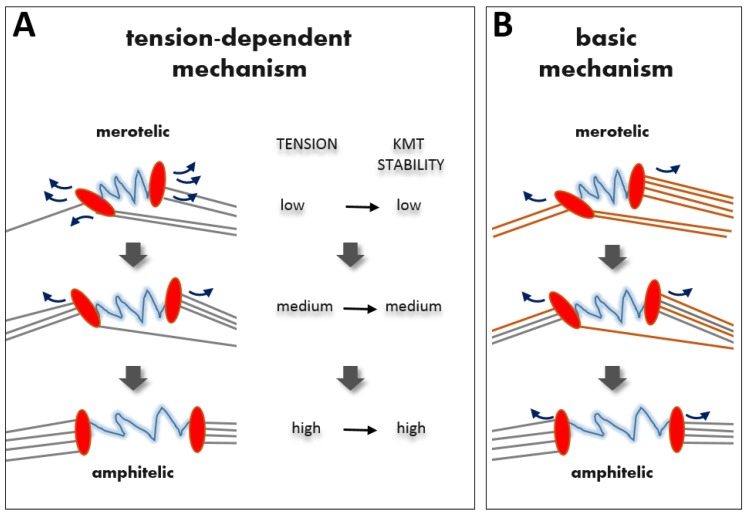Figure 3.
Models for correction of merotelic KMT attachment errors. Correction of merotelic attachments in vertebrate cells proceeds gradually during prometaphase and metaphase without necessarily losing all KMT attachments. (A) In the tension-dependent error-correction model, stretching between sister kinetochores (red ovals connected with blue springs) is the primary signal that modulates the turnover of KMT attachments (depicted with curved arrows). As kinetochores bind and lose KMTs, probing different configurations, the configurations that produce higher tension are assumed to induce higher KMT stability. Because their KMTs detach less frequently, such configurations last longer. This gradual evolution would lead eventually to the completely amphitelic configuration, which generates maximal tension. In the non-discriminate version of this model (as shown), all KMTs are affected similarly. Alternatively, in the selective version of this model, lifetime of merotelic vs. amphitelic KMTs is assumed to be regulated differently (see text for details). (B) In the basic mechanism, the gradual correction of merotelic attachments proceeds with no change in the turnover of KMT attachments. The rate of KMT turnover in this model does not depend on tension and is not selective, so all old KMTs (orange) eventually detach, whether correct and incorrect, and are replaced with new KMTs (grey). New KMTs preferentially attach correctly, favored by the back-to-back geometry of sister kinetochores.

